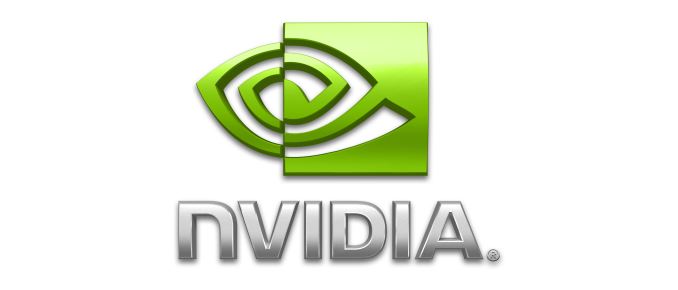NVIDIA Announces GameWorks SDK 3.1
by Daniel Williams on March 16, 2016 7:20 AM EST
Innovation is hard work. Doing work that has already been done elsewhere can be satisfying, but also annoying - no-one wants to reinvent the wheel every time. In the realm of 3D graphics, we are not limited to creating our wares from scratch - toolsets such as NVIDIA GameWorks are provided to developers allowing them to include advanced graphics rendering and physical simulation features into their products. The latest version, NVIDIA GameWorks 3.1, is being released this week.
NVIDIA GameWorks SDK 3.1 introduces three new graphics technologies involving shadows and lighting. NVIDIA Volumetric Lighting involves simulating how light behaves as it scatters through the air, and was showcased in Fallout 4. Moving over to shadows, we will see NVIDIA Hybrid Frustum Traced Shadows (HFTS) which involves rendering shadows that start as hard shadows nearer the casting object and transition to soft shadows further away. Lastly, in the new graphics features, we see NVIDIA Voxel Accelerated Ambient Occlusion (VXAO), which NVIDIA dubs as the highest quality ambient occlusion algorithm. What makes this version better than previous techniques is the ability to calculate shadows with all geometry in world space, versus older screen space techniques that can only cast shadows for geometry visible to the camera.
Adding to the roster of PhysX features is NVIDIA PhysX-GRB, which is a new implementation of NVIDIA’s PhysX rigid body dynamics SDK. This new implementation provides a hybrid CPU/GPU pipeline that NVIDIA claims can improve performance by a factor of up to 6X for moderate to heavy simulation loads, especially for those that are large on compute shader register resources. NVIDIA Flow is the other update to PhysX which will introduce the ability to simulate and render combustible fluids such as fire and smoke, and this time simulation will not be confined to a bounding box. This should lead to much more flexibility and usefulness in games and other software in the future.
Source: NVIDIA










52 Comments
View All Comments
Sttm - Wednesday, March 16, 2016 - link
Yeah because Intel has been targeting power and the iGPU which both have been improved immensely. Which they might have done even if AMD could compete in raw speed, as the PC business has been shifting to mobile for years now.nathanddrews - Thursday, March 17, 2016 - link
Whether GW intentionally cripples AMD hardware is not the debate because the goal of GW is to optimize for NVIDIA hardware and its the game devs that control what methods are used to display game content. It's the developer's fault for using GW. They could do everything using OpenCL if they wanted to, but they clearly don't want to, hence GW titles.medi03 - Wednesday, March 16, 2016 - link
There is TresFX that runs great on AMD AND nVidia cards, yet Witcher uses Hairworks.Try harder.
Space Jam - Wednesday, March 16, 2016 - link
AMD can optimize the execution, even if the source is blackboxed. It's more work, not impossible."Nvidia is supporting technology only they benefit from."
Well yes, that's literally the point of every proprietary tech, and the point of every tech (proprietary or otherwise) developed by a hardware designer.
"AMD is supporting open standards for all to use."
That isn't out of the generosity of AMD's heart but their market position and advertising strategy. They're not a charity.
xthetenth - Wednesday, March 16, 2016 - link
That is correct. The companies are using different marketing to try and get customers to buy their products. Customers deciding on a product is also incentivizing one or the other. Just because it's a legitimate thing for a business to do doesn't mean it's in the customer's interest.medi03 - Wednesday, March 16, 2016 - link
Experienced game developers say otherwise.Space Jam - Wednesday, March 16, 2016 - link
To further elaborate, software tech which AMD or Nvidia makes doesn't sell games, it sells GPUs. Even if the tech is open source. Don't lose sight of the basic mechanics of a business, especially not an international corporation with stockholders.DrKlahn - Wednesday, March 16, 2016 - link
When AMD has had parity or slight dominance they have not pushed proprietary software to hurt the competitors. Nvidia, as usual, has done the opposite. They've even used tessellation that can't be seen to hurt AMD and their previous customers. They want a monopoly. They want $500 GTX 970's. I've followed this industry since the 3DFX days and Nvidia has never been anything but dirty. They do engineer a nice card and write some good drivers thoughBinaryTB - Wednesday, March 16, 2016 - link
Don't know if AMD is always the "good guy". TressFX was proprietary AMD and ran horribly on Nvidia cards (remember Tomb Raider 2013?). They recently (as in December 2015) made TressFX open, but that doesn't mean they've never cared about profits or proprietary software.I'm glad they're going open with what they're releasing now, but I wouldn't blanketly state that they would always go for the solution that wouldn't hurt competitors.
DrKlahn - Wednesday, March 16, 2016 - link
AMD is publishing the source code for TressFX for anyone to use as far as I know. Even if they didn't at first, it's a far cry from what Nvidia has done. Again Nvidia makes a good product and I know why they do what they do. But based on their track record it should be the last company any of us want to see with a monopoly.